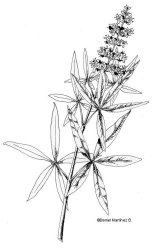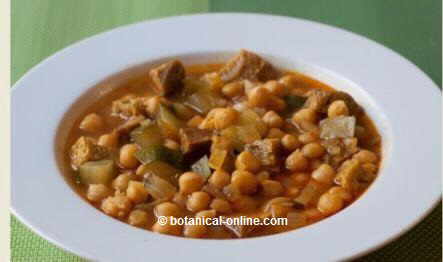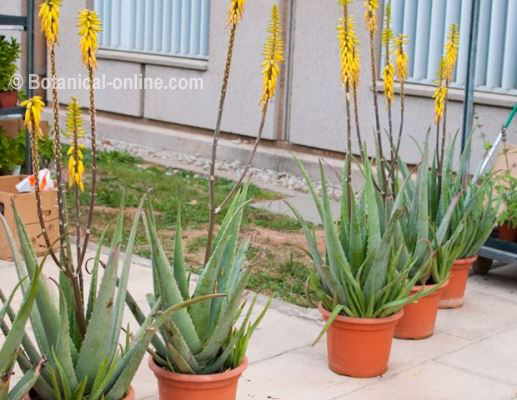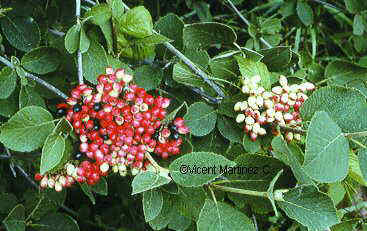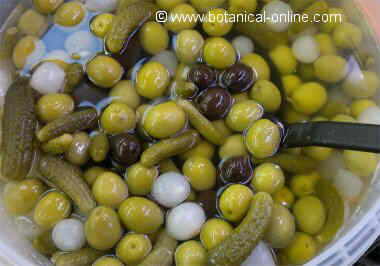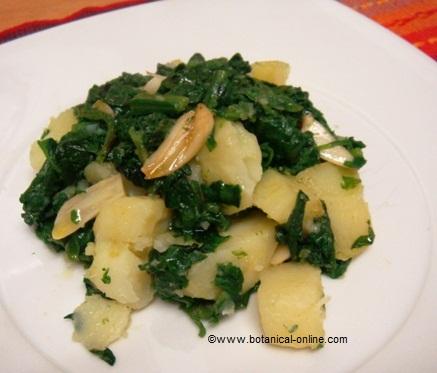Contents
What is a coltsfoot?
Characteristics of horsehoof or British tobacco (Tussilago farfara)
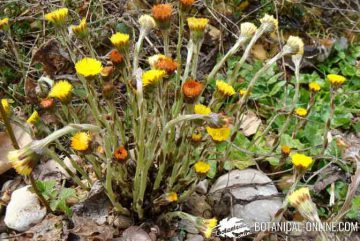 Common name: Coltsfoot, coughwort, horsehoof, Son-before-the-father, British tobacco.
Common name: Coltsfoot, coughwort, horsehoof, Son-before-the-father, British tobacco.
– Traditional Chinese Medicine: Kuan dong hua
Scientific name: Tussilago farfara L.
Etymology: Tussilago derives from the Latin word tussis, which means cough; and from agere, “to hunt”, alluding to the medicinal virtues of the plant against coughing. The term farfara is believed to be derived from farfer, “mealy”, referring to the white tomentum on young leaves.
Family: Compositae (Asteraceae)
Origin: plant native to Eurasia.
Coltsfoot habitat
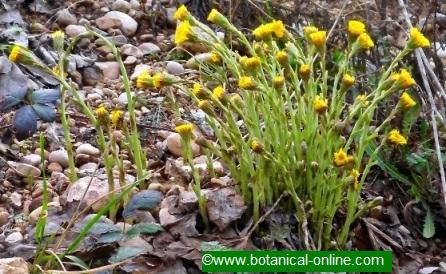
The plant is found wild in clay or calcareous soils (alkalinity indicator plant), and always in humid or moderately dry soils: roadsides, road ditches where clay accumulates, rivers, reeds, fountains, etc. From sea level to 2,000m. It is not found in very dry places.
Plant distribution
Throughout Europe, it grows in humid and cold places. It is not found in the Azores, Balearic Islands, Crete and the southernmost part of the Iberian Peninsula. West and North Asia, mountains of North Africa. Naturalized in North America. Introduced in South America, mainly as a medicinal plant.
Characteristics of coltsfoot
Coltsfoot, coughwort or horsehoof (Tussilago farfara) is a herbaceous plant. It’s just over a foot tall. Popularly, it is known to be one of the most widely used expectorant herbal medicines.
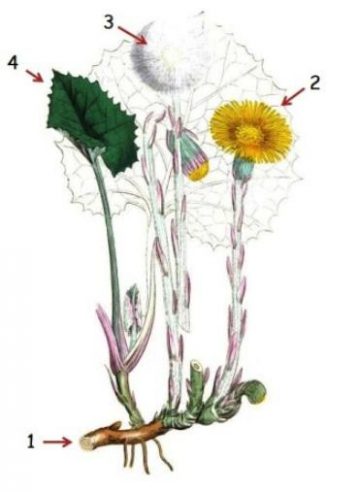
The main characteristic of this plant has baptized it since ancient times. In fact, coltsfoot or coughwort is already cited in ancient texts as filius ante patrem, or “sons before the father”, because the flowers of the plant are born first, directly from the vine, and when they are already withering, they begin to sprout the first leaves.
Therefore, it is a perennial plant, with an underground stem, called a rhizome, from which the flowers sprout in early spring, and later the leaves, in early summer, upright on a long petiole.
How does the growth of the plant develop?
In early spring, the plant develops its first shoots or scapes, without leaves, and provided with reddish scales.
The colts flower is one of the first spring flowers. The flowers are borne at the end of the scape or flower stalk, and are attractive and showy, bright yellow in color.
The coltsfoot flower is a head with radiated flowers, a type of inflorescence typical of Composite plants, and which may be reminiscent of the daisy flower or the dandelion flower.
It consists of a head with radiated flowers, which is made up of tubular flowers in the center of the flower bud, and in the periphery, ray-shaped flowers (female) with fine yellow petal-like ligules.
The flower heads close in the afternoon and when it rains.
The basal leaves appear after flowering. These are large, with long and simple petioles: blades broad, cordate and dentate on the margins. The entire leaf presents 5-8 angular sinuosities.
The shape and size of its leaves is reminiscent of horse nails or their footprint, which is why it has adopted its common name “horse’s nail or horse’s foot” in various languages.
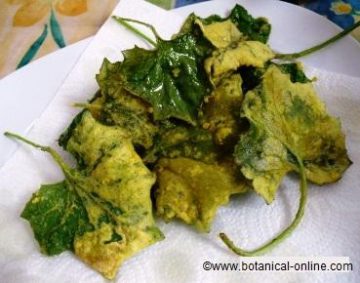
The new leaves present white tomentum on both sides of the leaf.
From what has been described, coltsfoot may seem like an early flowering plant, although it is the opposite. Its vegetative cycle happens in spring, and when the leaves sprout, the cold winter prevents the development of flowers.
It blooms when the weather is favorable, in early spring, being one of the first flowers of the year.
The plant in late summer, when it has already developed its leaves. The white integument can be seen on the young leaves of the plant.
The flowers are born from the axils of the perishable leaves of the previous year, although it cannot be seen with the naked eye since its stem is underground.
The flowers form a pappus, which may be reminiscent of the dandelion, which allows the dispersal of its seeds.
The fruit is an achene with a plume.
Used parts
Leaves and flowers.
Coltsfoot uses
- Phytotherapy: both leaves and flowers are used for medicinal purposes. The flowers are appreciated as a medicine and antitussive remedy, while the leaves are used internally for similar purposes; and externally as vulnerable. It is important to consult the dose of use and the time of treatment, since this plant can be toxic to the liver.
- Edible plant: in some areas the plant has been used in food as an edible wild plant.
- Other uses: In the past, the dried leaves were smoked as a substitute for tobacco, which gives it the common name in English of British tobacco.
![]() More information on coltsfoot, horsehoof or British tobacco
More information on coltsfoot, horsehoof or British tobacco

